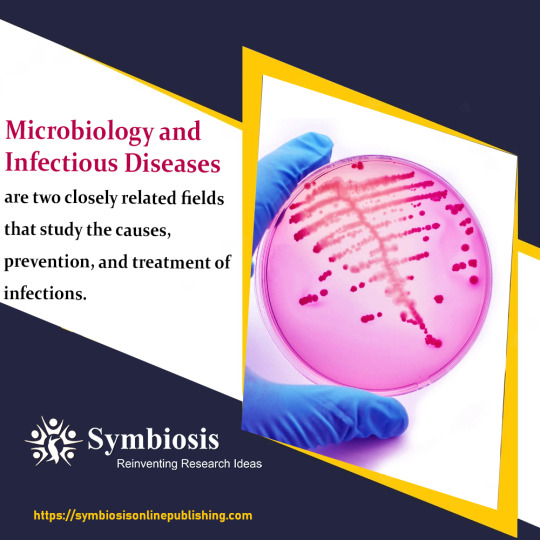#MicrobialGenetics
Explore tagged Tumblr posts
Text
Vibrio And Actinomyces Question And Answers
#Microbiology#Bdsnotescom#Bacteria#MicrobialGenetics#Parasitology#VibrioAndActinomycesQuestionAndAnswers
0 notes
Link
#Microbiology#Microorganisms#MicrobialGenetics#Virology#Immunology#InfectiousDiseases#HostDefenses#MicrobialMetabolism#MedicalMicrobiology...
0 notes
Text
#agitators#vadodara#microbialgenetics#electronmicroscopy#engineering#microbiology#micropipette#eppendorftubes#immunohistochemistry#fetalbovineserum#thermofisherscientific#microbialfuelcell#electrophoresis#lab#labtested#centrifuge#scanningelectronmicroscopy#greenfluroscentprotein#astrobiology#incubator#autoclave#laminarairflow#lablife#justthinkitskk#molecularbiology#genetics#biochemistry#immunology#biotechnology#biowinglinkandthink
0 notes
Text

1. #Microbiology is the study of #microorganisms, which are tiny organisms that are too small to be seen with the naked eye.
2. Microorganisms include #bacteria, #viruses, #fungi, and #protozoa. #infectiousdiseases are diseases that are caused by microorganisms. Infectious diseases can be spread from person to person, from animals to people, or from the environment to people.
Visit @ https://symbiosisonlinepublishing.com/microbiology-infectiousdiseases/
#microbiologist#microbiologia#microbiologylab#microbialdynamics#infectiousdiseases#nanomicrobiology#fermentation#MicrobialGenetics#mycology#virology#medicalmicrobiology#AgriculturalMicrobiology#Immunologicaltechniques#CoronaryArteryBypassGrafting#lifesciences#lifesciencejournals#microbial#sciencejournal#journals#journal#peerreviewed#pubmed#onlinepublishing#publication#symbiosisonlinepublishing
0 notes
Photo

Genetic engineering involves organisms manipulation of genes using biotechnology. In recent years there is a demand in genetics as a career due to the development of improved medicine and wellness therapies. Genetic engineering is a research-oriented field. It has a wide scope in agriculture, medicine, and industries. To be a genetic engineer a strong understanding of scientific methods, critical thinking, analytical, mathematical, problem-solving skills and the ability to use graphics, photoimaging, computer-aided design (CAD), laboratory equipment, software such as PERL, Python are required. Courses in Genetic Engineering Genetics field is very vast – it comprises of population, ecological, human, conservation, medical, classical, quantitative, molecular and immunogenetics. There are several undergraduate and postgraduate courses available for students such as bachelor, masters as well as a doctoral degree in this field. In order to get admission for Bachelor courses, the student should have Physics, Biology, and Chemistry at the senior secondary level. #geneticengineering #career #shikshaadvisor #admission #jeemain #cbse #icse #education #neet2020 #geneticengineers #humangenetics #moleculargenetics #molecularbiology #microbialgenetics #stemcellengineering #tissueengineering #bioinformatics #appliedgenetics #biomedicalgenetics #biotechnology #newagecareer #medicineindustry #agricultureindustry (at Shiksha Advisor) https://www.instagram.com/p/B-_GIjZjccD/?igshid=1upaqa6mwtd2d
#geneticengineering#career#shikshaadvisor#admission#jeemain#cbse#icse#education#neet2020#geneticengineers#humangenetics#moleculargenetics#molecularbiology#microbialgenetics#stemcellengineering#tissueengineering#bioinformatics#appliedgenetics#biomedicalgenetics#biotechnology#newagecareer#medicineindustry#agricultureindustry
0 notes
Photo

Latest #Advancement on #Microbiology
International Journal of Microbiology & Advanced Immunology (IJMAI) ISSN:2329-9967 is a comprehensive, peer reviewed journal devoted to microbiology and advanced immunology. IJMAI, published by SciDoc is an open access journal that includes high quality papers, which covers all major areas of microbiology, immunology and its related fields. SciDoc with its Open Access publication model spreads all the day-to-day developments and research to readers around the world.
#Mycology#Microbialgenetics#Molecularmicrobiology#Soil microbiology#industrial microbiology#Microbial Genetics#SciDocpublishers#SciDocPublishers_IJMAI
0 notes
Text
Various Important Laboratory Tests And Miscellaneous Question And Answers
#Microbiology#Bdsnotescom#Bacteria#MicrobialGenetics#Parasitology#VariousImportantLaboratoryTestsAndMiscellaneousQuestionAndAnswers
0 notes
Link
#Microbiology#Microorganisms#MicrobialGenetics#Virology#Immunology#InfectiousDiseases#HostDefenses#MicrobialMetabolism#MedicalMicrobiology...
0 notes
Text

𝟏. 𝐒𝐜𝐨𝐩𝐞: Microbiology is the study of microorganisms, which include bacteria, viruses, fungi, algae, protozoa, and archaea. It encompasses various subfields, including bacteriology, virology, mycology, and parasitology.
𝟐. 𝐌𝐢𝐜𝐫𝐨𝐛𝐢𝐚𝐥 𝐃𝐢𝐯𝐞𝐫𝐬𝐢𝐭𝐲: Microbiologists explore the incredible diversity of microorganisms found in different environments, including soil, water, the human body, and extreme environments like hot springs and deep-sea vents.
Visit @ https://symbiosisonlinepublishing.com/microbiology-infectiousdiseases/
#microbiologist#microbiologia#microbiologylab#microbialdynamics#infectiousdiseases#nanomicrobiology#fermentation#MicrobialGenetics#mycology#virology#medicalmicrobiology#AgriculturalMicrobiology#Immunologicaltechniques#CoronaryArteryBypassGrafting#IschaemicHeartDisease#Enzymology#fluorescentfusion#lifesciences#lifesciencejournals#microbial#sciencejournal#journals#journal#peerreviewed#pubmed#onlinepublishing#publication#symbiosisonlinepublishing
1 note
·
View note
Text
Urinary Tract Infection Question And Answers
#Microbiology#Bdsnotescom#Bacteria#MicrobialGenetics#Parasitology#UrinaryTractInfectionQuestionAndAnswers
0 notes
Text
Transplantation And Tumor Immunity Question And Answers
#Microbiology#Bdsnotescom#Bacteria#MicrobialGenetics#Parasitology#TransplantationAndTumorImmunityQuestionAndAnswers
0 notes
Text
The Immune Response Question And Answers
#Microbiology#Bdsnotescom#Bacteria#MicrobialGenetics#Parasitology#TheImmuneResponseQuestionAndAnswers
0 notes
Text
Streptococcus Question And Answers
0 notes
Text
Sterilization And Disinfection Question And Answers
#Microbiology#Bdsnotescom#Bacteria#MicrobialGenetics#Parasitology#SterilizationAndDisinfectionQuestionAndAnswers
0 notes
Text
Staphylococcus Question And Answers
0 notes
Text
Spirochetes Question And Answers
0 notes